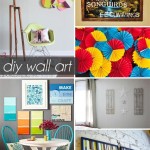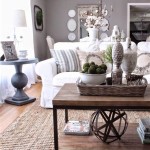Persian Home Decor Ideas: Embracing Art, History, and Elegance
Persian home decor is renowned for its rich history, intricate artistry, and vibrant color palettes. Drawing from centuries of tradition and cultural influences, it offers a unique aesthetic that combines functionality with opulence. This article explores key elements of Persian home decor, providing insights into incorporating this timeless style into modern living spaces.
Authentic Persian decor extends beyond mere aesthetics; it embodies a philosophy that values hospitality, comfort, and spiritual well-being. Every detail, from the placement of furniture to the choice of textiles, is carefully considered to create a harmonious and inviting environment. The goal is to create a space that is both beautiful and functional, reflecting the values and traditions of Persian culture.
Key Element 1: The Significance of Persian Rugs
Persian rugs are arguably the most iconic and recognizable element of Persian home decor. These hand-knotted masterpieces are more than just floor coverings; they are works of art that tell stories through their intricate designs and vibrant colors. The patterns and motifs often carry symbolic meanings, drawing inspiration from nature, mythology, and historical events. The quality of a Persian rug is determined by several factors, including the type of wool used, the knot density, and the complexity of the design.
Choosing the right Persian rug requires careful consideration of size, color, and pattern. Larger rugs can define an entire room, while smaller rugs can be used to highlight specific areas or furniture pieces. The color palette of the rug should complement the existing color scheme of the room, creating a cohesive and visually appealing space. Traditional Persian rug designs often feature geometric patterns, floral motifs, and intricate medallions. However, more contemporary designs are also available, offering a modern twist on this classic art form. Placing a Persian rug in the center of a living room or dining room can instantly elevate the space, adding warmth, texture, and visual interest.
Furthermore, it is important to understand the different types of Persian rugs. Some of the most well-known types include Tabriz, Kashan, Isfahan, and Heriz rugs, each originating from different regions of Iran and possessing distinct characteristics. Tabriz rugs, for example, are known for their intricate designs and fine weave, while Kashan rugs are characterized by their luxurious wool and elegant floral patterns. Understanding these differences can help individuals select a rug that best suits their personal preferences and the overall aesthetic of their home.
Maintenance of Persian rugs is crucial to preserve their beauty and longevity. Regular vacuuming is essential to remove dust and debris, and professional cleaning is recommended every few years. It is also important to protect the rug from direct sunlight and heavy foot traffic to prevent fading and wear. With proper care, a Persian rug can become a cherished heirloom, passed down through generations.
Key Element 2: Incorporating Traditional Furniture and Materials
Traditional Persian furniture is characterized by its ornate details, rich materials, and exquisite craftsmanship. Wood, particularly walnut and rosewood, is a commonly used material, often adorned with intricate carvings and inlaid designs. Sofas and chairs typically feature plush cushions and luxurious fabrics, such as silk and velvet, providing both comfort and elegance. The use of low seating arrangements, such as floor cushions and low sofas, is also a characteristic feature of Persian interiors, creating a relaxed and inviting atmosphere.
To incorporate traditional Persian furniture into a modern setting, it is important to strike a balance between authenticity and functionality. A statement piece, such as a carved wooden coffee table or a sumptuously upholstered sofa, can serve as a focal point in a room, while more contemporary pieces can be used to complement the traditional elements. The use of natural materials, such as wood, stone, and clay, is also essential to creating an authentic Persian aesthetic. These materials add warmth, texture, and a sense of connection to nature.
Another important aspect of Persian furniture is its functionality. Many traditional pieces are designed with storage in mind, featuring drawers, cabinets, and hidden compartments. This reflects the Persian emphasis on practicality and organization. Incorporating these functional elements into modern spaces can help create a clutter-free and harmonious environment. For instance, a traditional Persian chest can be used to store blankets, pillows, or other household items, adding both style and functionality to a room.
Furthermore, the use of handcrafted furniture is highly valued in Persian culture. Supporting local artisans and purchasing handmade pieces can add a unique and authentic touch to a home. These pieces often possess a level of detail and craftsmanship that is difficult to replicate with mass-produced furniture, making them truly special and adding character to the space.
Key Element 3: Embracing Color and Pattern
Color plays a crucial role in Persian home decor, with vibrant hues and intricate patterns being used to create a sense of warmth, energy, and beauty. Traditional Persian color palettes often feature rich jewel tones, such as ruby red, sapphire blue, emerald green, and gold. These colors are often combined with softer, more neutral tones, such as beige, ivory, and cream, to create a balanced and harmonious effect. The use of these colors is not arbitrary; they often carry symbolic meanings, reflecting the cultural values and beliefs of the Persian people.
Incorporating color and pattern into a modern home can be achieved through various means, including textiles, artwork, and decorative accessories. Persian rugs, as previously mentioned, are an excellent way to introduce vibrant colors and intricate patterns into a room. Cushions, throws, and curtains can also be used to add pops of color and texture. Furthermore, incorporating Persian-inspired artwork, such as miniature paintings or calligraphy, can add a touch of elegance and sophistication to the space.
The use of geometric patterns is also a characteristic feature of Persian decor. These patterns, often found in tilework, textiles, and architectural details, add visual interest and complexity to a space. Incorporating geometric patterns into a modern home can be achieved through the use of wallpaper, fabric, or even stencils. These patterns can be used to create a focal point in a room or to add subtle accents to existing decor.
Finally, it is important to consider the overall balance and harmony of the color scheme. While vibrant colors and intricate patterns are essential elements of Persian decor, it is equally important to avoid overwhelming the space. Using a mix of bold and neutral colors, and carefully considering the placement of patterns, can create a visually appealing and harmonious environment. The key is to create a space that is both vibrant and relaxing, reflecting the warmth and hospitality of Persian culture.
Beyond these core elements, other aspects such as lighting, the inclusion of natural elements like plants, and the use of traditional Persian motifs in decorative items contribute to the overall aesthetic. The selection of appropriate lighting fixtures, such as lanterns or chandeliers, can enhance the ambiance of a room and highlight the intricate details of the decor. The inclusion of plants, such as jasmine or citrus trees, can add a touch of freshness and bring a sense of nature indoors. The use of traditional Persian motifs, such as pomegranates or peacocks, in decorative items can add a subtle yet authentic touch to the space.
Ultimately, Persian home decor offers a timeless and elegant aesthetic that can be adapted to suit a variety of tastes and styles. By understanding the key elements of this design tradition, individuals can create a home that is both beautiful and functional, reflecting the rich history and cultural heritage of Persia.

Decorating Bohemian Interiors With Persian Rugs Catalina Rug

29 Oriental Rugs For Every Space Architectural Digest

30 Best Persian Decor Ideas House Design

Decorating With Oriental Persian Rugs Emily A Clark

Some Cozy Ideas To Bring Spirit Home Using Persian Rugs Carpetu2

Decorating With Antique Rugs Oriental Persian Rug Home Decor

Traditional Persian Style Home Decorating Ideas Marokkaans Ontwerp Marokkaanse Woonkamers Interieur

Decorating With Antique Rugs Oriental Persian Rug Home Decor

29 Oriental Rugs For Every Space Architectural Digest

8 Decorating Ideas For Styling A Small Living Room Ruggable Blog
Related Posts







